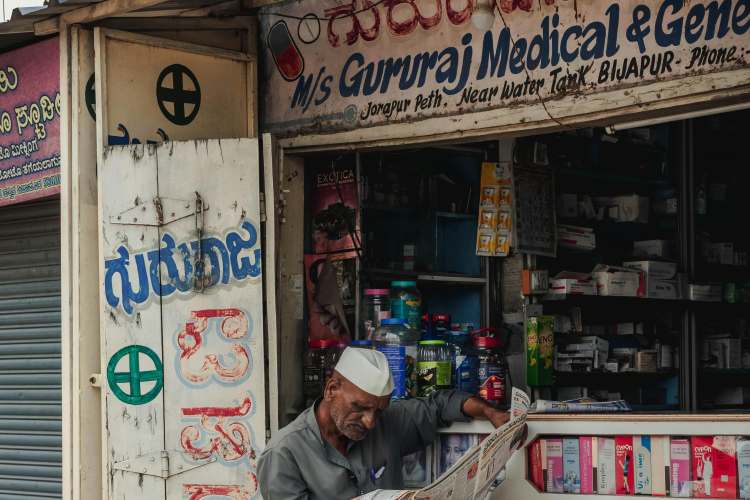
When a cough syrup meant to soothe children’s throats turns into a deadly poison, something has gone gravely wrong. The death of 24 children in Madhya Pradesh after consuming a locally made syrup is not a random tragedy. It is a symptom of systemic failure — a collapse of regulation, drug safety oversight, and accountability in India’s pharmaceutical sector.
This is not the first such episode. India-made syrups were earlier linked to the deaths of over 140 children in The Gambia and Uzbekistan. Each time, outrage follows, officials promise reform, and the world questions India’s claim to be the “pharmacy of the world.” The pattern repeats because the underlying architecture remains unreformed.
The government’s refusal this month to extend the deadline for small drugmakers to meet international manufacturing standards is an overdue step. But it comes too late for the families of children who trusted a system that should never have failed them.
READ I Europe’s far-right find happy hunting grounds in social media
A system in decay
The facts are chilling. Tests showed that Coldrif syrup, produced by Chennai-based Sresan Pharmaceuticals, contained 48.6 per cent diethylene glycol (DEG) — almost 500 times the permissible limit. DEG is an industrial solvent sometimes used fraudulently as a cheap substitute for pharmaceutical-grade glycerine or propylene glycol.

Sresan’s facility was found unfit for manufacturing. Yet it continued to operate, selling its products to doctors and pharmacies across central India. The Central Drugs Standard Control Organisation (CDSCO) revoked its licence only after the deaths. Its founder was arrested for manslaughter, but there is little confidence that the trial will lead to conviction. No one was jailed after the earlier deaths abroad.
This is not a failure of one company. It is a failure of drug safety oversight. India’s drug regulatory system is fragmented across 36 state authorities and one central body, each overburdened, under-resourced, and working with outdated technology. Laboratories often lack the equipment to test for contaminants like DEG. The result is a regulatory mirage — rules for drug safety exist, but enforcement vanishes.
Double standards in drug safety
The tragedy exposes a disturbing asymmetry in drug safety regulations. Medicines meant for export are required to undergo additional government testing, but those sold domestically face no such scrutiny. It is an inversion of logic: drugs meant for Indian patients should face stricter checks, not fewer.

India’s $50 billion pharmaceutical industry comprises about 3,000 companies and over 10,000 plants. Large firms have largely complied with international norms. The smaller ones — many operating out of sheds and residential buildings — have repeatedly lobbied for exemptions. The government first set a June 2024 deadline for compliance, then extended it by six months for smaller units.
After the Coldrif deaths, that grace period has rightly ended. Yet this decision only reveal the problem — regulatory deadlines have no meaning if enforcement follows funerals, not audits.
The cost of complacency
India’s reputation as the pharmacy of the world rests on two pillars: affordability and trust. The first remains intact; the second is cracking. Every incident — whether in Africa, Central Asia, or now India itself — chips away at global confidence in Indian generics. Importing nations are already demanding stricter verification, and the World Health Organisation has issued multiple alerts on contaminated syrups traced to Indian manufacturers.
This reputational damage will not be confined to the offending companies. It threatens India’s entire export ecosystem, from bulk drugs to vaccines. Even the best-run firms will bear the stigma of a lax regulatory culture. A nation cannot export medicine to the world while failing to protect its own children.
Building a credible regulatory architecture
Reform must go beyond rhetoric. It must be institutional, not episodic. The following changes are essential if India is to restore trust in its pharmaceuticals:
Uniform and non-negotiable standards: Every manufacturer, big or small, must comply with WHO-recommended Good Manufacturing Practices. No differential treatment, no political lobbying for extensions.
Integrated drug safety oversight: The CDSCO and state regulators must be merged into a single, empowered national authority with clear lines of accountability. The United States Food and Drug Administration offers one model: centralised command, decentralised presence.
Mandatory batch testing and supply chain audits: The practice of “shared facilities” and unverified solvents must end. Raw-material suppliers should be licensed and traceable through digital audit trails.
Criminal liability for negligence: Recalls and fines are insufficient. When negligence kills, the law must treat it as culpable homicide. Only the prospect of imprisonment will alter corporate behaviour.
Modernised laboratories and skilled manpower: Most state drug labs still operate with outdated equipment. Without investment in technology and trained personnel, reform is hollow.
Transparency and public access: A real-time public database of drug licences, inspection reports and recall histories would empower doctors, pharmacies and citizens alike.
These are not radical ideas. They are the minimum conditions for a credible system.
Drug safety and the politics of neglect
Pharmaceutical regulation rarely attracts political attention. It offers little electoral reward and requires administrative rigour rather than grand announcements. Yet the stakes are immense. When oversight collapses, it is the poorest — those who rely on public hospitals and local chemists — who pay with their lives.
The present crisis must therefore become a political priority. Parliament should demand a white paper on the state of India’s drug regulation. States must be made accountable for enforcement failures. And the health ministry must publish a timeline for full implementation of WHO GMP compliance.
The question is not whether India can afford these reforms. It is whether India can afford another Coldrif tragedy.
The “pharmacy of the world” cannot function on trust alone. It must rest on integrity, science, and accountability. The lives lost in Madhya Pradesh are a grim reminder that regulatory complacency is not a bureaucratic lapse but a national failure.
If the government’s renewed enforcement drive is serious, it should be backed by investment, transparency and zero tolerance for delay. Otherwise, India will continue to export cheap drugs — and import shame.
Anil Nair is Founder and Editor, Policy Circle.

